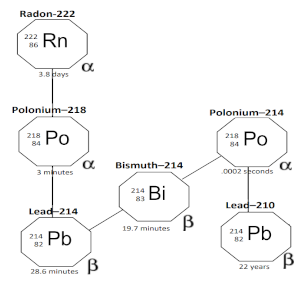
College of Engineering Unit:
Earthquakes of various magnitudes affect many populations across the world, especially regions that are on major fault lines. With such natural disasters, there can be significant property damage along with additional natural phenomena, such as landslides, soil liquefaction, and tsunamis. Prior to the impact of an earthquake radon gas is released from rock structures present along the fault line. Numerous studies have been conducted focusing on how to predict earthquakes, specifically by monitoring gamma rays.
This project aims to find the correlation between gamma measurements and earthquakes in the western region of the United States. The team's first goal was to identify the optimal gamma energy, 609 keV from the decay of Bismuth-214, which is a decay product of Radon-226. Once the energy was identified, the team utilized the Environmental Protection Agency’s gamma-monitoring data (channel 5- contains the energy we are looking at) from Alaska, California, and Oregon to compare the timeline to earthquakes in these regions. Upon analyzing the data, the team noticed that many earthquakes in these regions specifically California showed spikes in gamma counts followed by an earthquake event. Based on this information, the team decided to implement 1-3 new detectors in the ground or water of each state to collect data and further compare it to future and past earthquakes. Additionally, the team focused on developing an AI model to predict earthquakes using gamma monitoring data from current and new detectors.